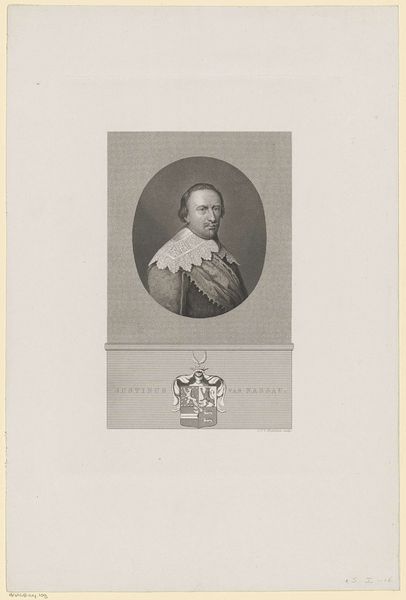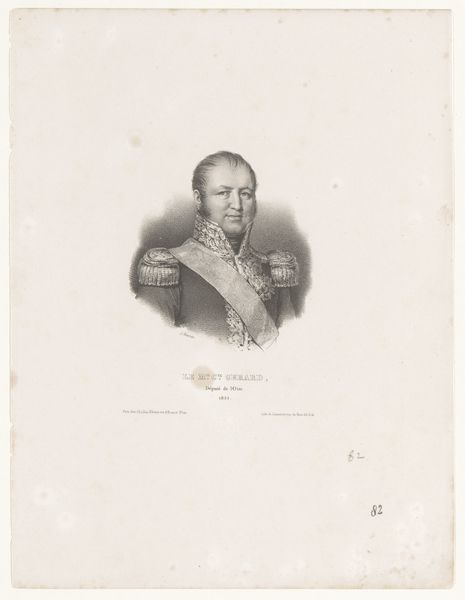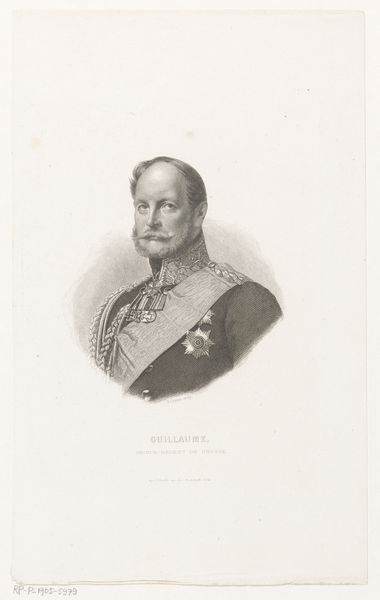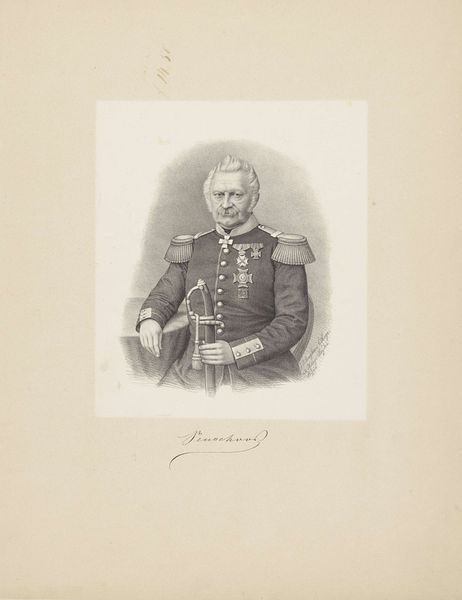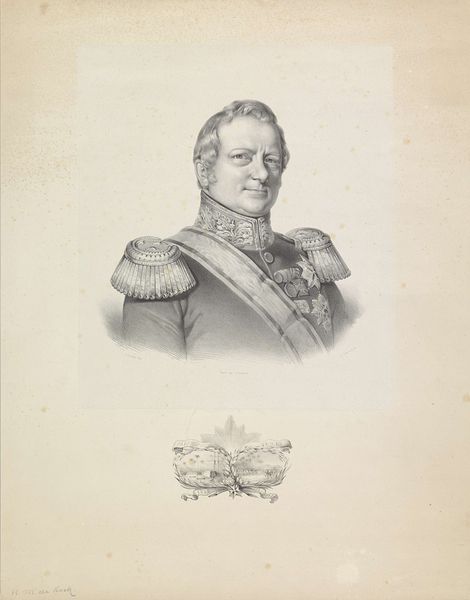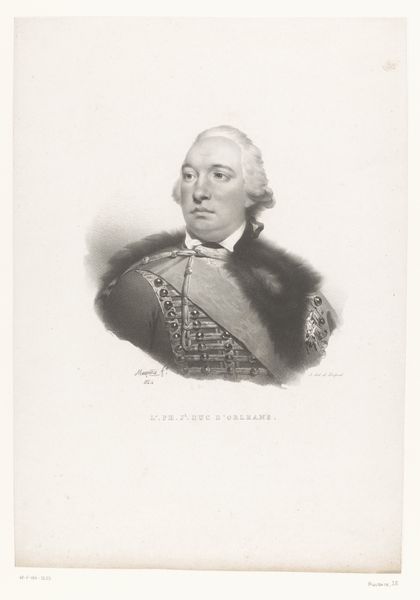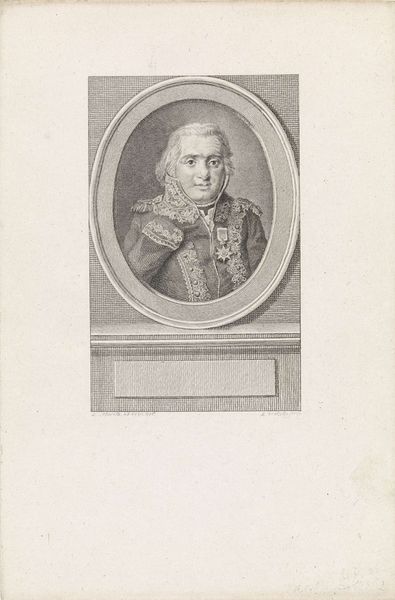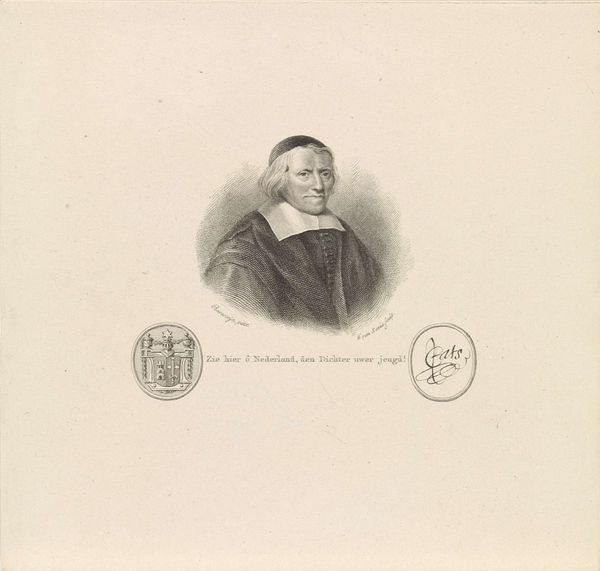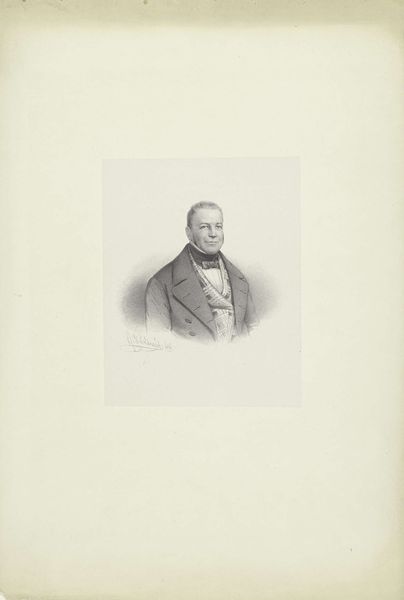
print, engraving
#
portrait
# print
#
history-painting
#
engraving
#
realism
Dimensions: height 488 mm, width 343 mm
Copyright: Rijks Museum: Open Domain
Curator: I find this print utterly compelling—it possesses a reserved sort of dignity, don’t you think? Editor: There is something stately, almost severe about it, despite the frothy lace. Is it one of van Groeneveldt's works? Curator: Indeed! This engraving, believed to have been crafted between 1831 and 1880, portrays Justinus, Count of Nassau. Van Groeneveldt has captured him with impressive detail using the print medium. Editor: The technique employed truly invites an examination of light and shadow, and their arrangement around the subject’s face—a study in power and restraint. The lines around the eyes! A map of shrewd intelligence and perhaps...weariness? Curator: It strikes me as profoundly humane in its realism. Think about the historic context, too! This wasn't a commission by Nassau himself, of course, being some centuries later. The print served more to evoke the romanticism and history the House represented at the time. A strategic visual, I dare say! Editor: The semiotic weight of such an image is intense—consider the symbols deployed, like the subtle coronet below the name. Each detail layers meaning onto the figure. Do you believe van Groeneveldt was trying to imbue Justinus with specific virtues through composition and form? Curator: Possibly. Groeneveldt probably wanted to engage viewers by suggesting they reflect on Justinus of Nassau and perhaps draw conclusions. Consider how that lavish lace contrasts with the darker background... it calls to mind that era's emphasis on both opulence and hidden depths. Editor: Yes! How the crisp precision and ordered geometry of the lace stand in relation to the subject's organic, softer facial features. It sets up a marvelous dialogue—structured against fluid. Curator: Ultimately, I see this print as a dialogue across centuries—a careful construction not merely to represent, but to almost subtly persuade us about legacy and significance. Editor: I agree. It offers more than mere documentation—it's an invitation to critically observe how powerful images shape lasting historical narratives and their material articulation.
Comments
No comments
Be the first to comment and join the conversation on the ultimate creative platform.

